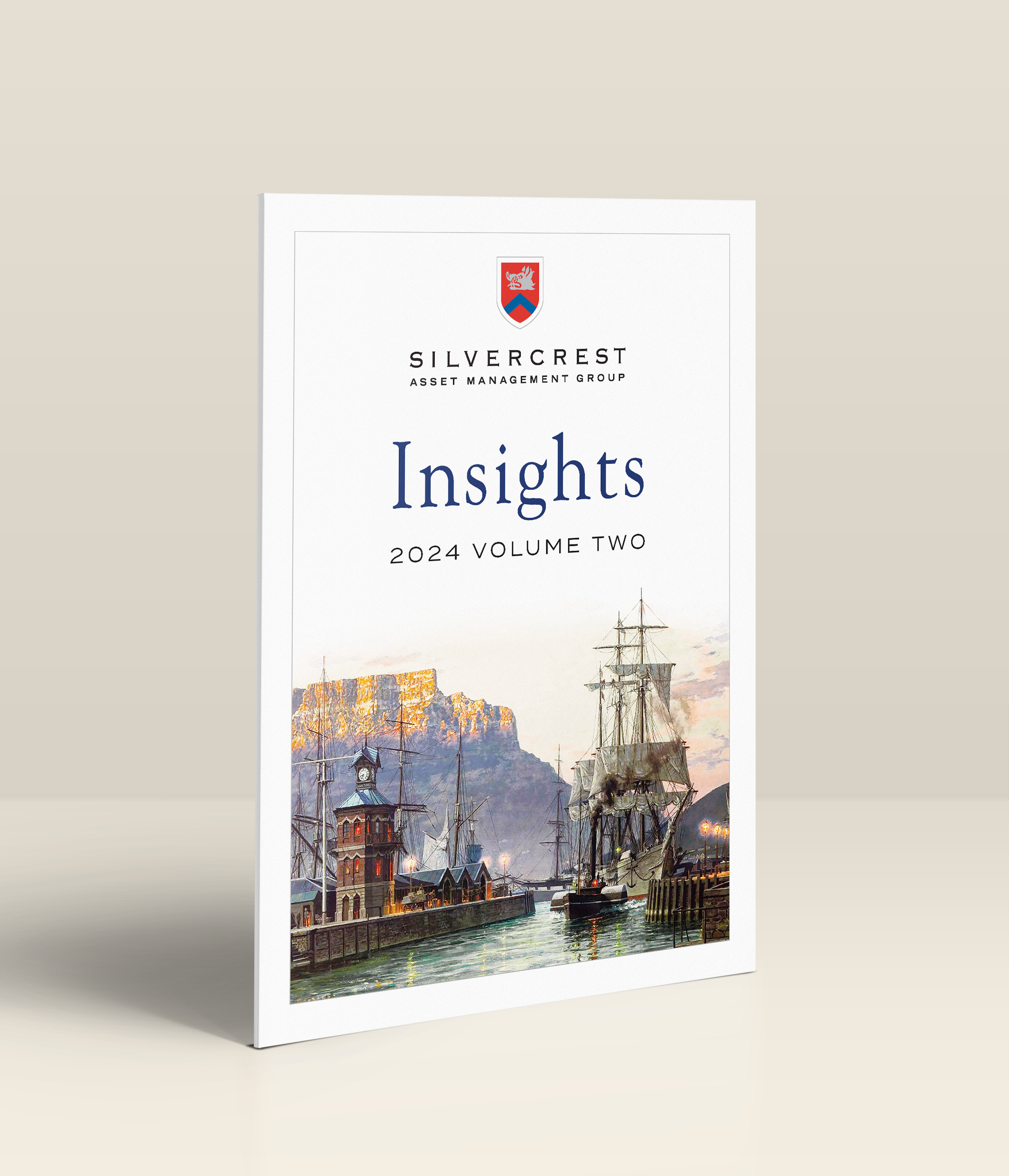Over the course of one’s life, personal finance needs shift. One guiding principle, however, remains constant: the value of financial planning. Financial security at all levels of wealth involves prudent decisions and foresight. Whether tailoring an investment portfolio to fit your goals or preparing to bequeath generational wealth, the path to financial success begins with a clear vision and a well-crafted plan.
Understanding current and planned sources and uses of cash enables individuals, families, and their portfolio managers to determine what is needed for the future.
Each individual and family should have a distinct financial plan, including short-term goals defining the present and long-term objectives for the future. The first step is often a cash flow analysis, which considers cash inflows/outflows and taxes, among other things. This can be followed by a holistic review of a personal balance sheet, breaking down assets by liquidity and illiquidity. These tools assist in forecasting how a current financial picture might look a decade from now. How will a large investment impact cash on hand, or how much should be saved for the next generation? Understanding current and planned sources and uses of cash enables individuals, families, and their portfolio managers to determine what is needed for the future. Without this clarity, there is the risk that unforeseen cash obligations from short-term purchases or investments could threaten long-term financial objectives. Tailoring the financial plan is as essential as customizing one’s asset allocation or estate plan.
While it might seem that financial planning becomes less relevant at higher wealth levels, cash flow analysis is always critical to ensuring the effective utilization of family wealth at all stages of life. Young individuals and families contemplate many significant purchases and expenses early on, established individuals and families have more complex finances that need to be tracked carefully, and individuals who are close to or already retired need to minimize income to avoid taxes and plan for their estates. These stages are related, and poor decisions made up or down the chain can have negative consequences during an individual’s life or for their estate. Financial planning helps keep a personal or family balance sheet healthy, preventing unexpected liquidity issues from threatening your peace of mind and maximizing your potential to prudently leverage assets.
The Benefits of Financial Planning at Various Stages of Life
The Young Individual & Family
Achieving short-term goals should not come at the risk of sacrificing long-term objectives.
Short-term goals for young individuals and families often involve significant milestones such as purchasing a home, getting a graduate degree, or having children. These aspirations might also include launching a business or engaging in other major financial ventures. Achieving these short-term goals should not come at the risk of sacrificing long-term objectives. Retirement plans should be explored at an early age. Younger individuals and families should consider where they see themselves living and working in 5–10 years before buying a home or pursuing further education. A comprehensive financial plan plays a vital role in assessing how new investments and acquisitions will impact their financial well-being in the long term.
Choosing a Family Home
One young couple asked us: What will our financial situation look like if we spend $1,500,000 on a house versus $3,000,000? How will this decision affect us in the future? To answer these questions, we prepared a cash flow analysis and personal balance sheet for them. Projected cash inflows, such as salaries and portfolio income, were compared to their expected outflows, such as expenses, discretionary spending, and taxes. The output contrasted what their future asset growth could look like if they did or did not purchase the more expensive house. Purchasing the more expensive home would have a negative effect on their portfolio’s principal, and as a result, their income would be reduced. Having the numbers in front of them clarified their thought process, and they ultimately decided against the purchase.
The Established Individual & Family
As the asset base grows, so does the complexity of the financial plan.
During this phase of life, individuals often experience a rapid expansion of their asset base and a partial realization of their longer-term objectives. As the asset base grows, so does the complexity of the financial plan. Some of the more significant milestones during these years could include paying for a child’s college tuition, expanding into a larger house, or investing in a vacation home. It may also be a time for business investment and expansion. Not only should retirement planning remain in focus, but initial ideas for transferring wealth to the next generation should also be considered. While it might be tempting to ignore the tedium of cash flow analysis, given the complexity of the family balance sheet at this stage, it becomes increasingly important to understand the source and destination of every dollar. This can derisk your finances and reveal opportunities to safely increase your leverage.
Assessing Liquid & Illiquid Assets
One of our clients reached a point where his asset base mushroomed. Many liquid and illiquid investments had been made. At the time, the client sought extra cash flow to make a significant investment in private equity. Before doing so, he wanted a holistic view of his entire asset base, segmented into liquid versus illiquid assets. A cash flow projection and balance sheet analysis indicated that the client had a much larger allocation to illiquid assets than he initially anticipated. Using the projection, we also showed him a schedule of the estimated timeframe of liquid payouts from his illiquid investments. This enabled him to make an informed decision on how much added risk he was comfortable with.
The Pre-Retirement Stage
Retirement planning becomes the most crucial part of the financial plan.
As individuals approach retirement, they typically have fewer short-term goals as long-term objectives come into focus. This period is often marked by a desire to simplify and streamline in anticipation of life after work. Key steps might involve transferring business interests to the next generation, selling off unused or unwanted assets, and planning sources of income without a salary. It is also an important time to fine-tune one’s estate plan. Retirement planning becomes the most crucial part of the financial plan at this stage, and tax considerations should be seriously considered on any asset sales or future income streams.
Simplifying Finances for Retirement
A client of ours was discerning retirement for many years but was hesitant due to her confusing balance sheet. She wanted to both simplify her finances in preparation for retirement and know where her income should come from once her salary ceased. We prepared a comprehensive cash flow analysis and asset projection to show the client her various real estate investments, trusts, and retirement accounts. This helped us develop a tax-sensitive plan for income streams post-retirement. During this exercise, the client realized several accounts could be combined, and some debts could be paid off, simplifying her balance sheet. The client found comfort in knowing which assets she could draw income from, which empowered her to pull the trigger on retirement.
The Retirement Stage
The retirement stage prompts a critical review of one’s overall estate and the implementation of strategies for tax-efficient inheritance planning.
During retirement, individuals’ and families’ financial priorities typically undergo a significant shift. Most long-term objectives have been attained or are within reach. Thus, retirees strive to sustain their desired lifestyle throughout their remaining years while leveraging their accumulated wealth to make a positive impact. This might involve funding their grandchildren‘s education, embarking on global travel, or charting a meaningful course for philanthropic giving. Moreover, the retirement stage prompts a critical review of one’s overall estate and the implementation of strategies for tax-efficient inheritance planning for future generations.
Balancing Planned Giving & Inheritance
A retired couple was concerned about their ability to support the charities they were passionate about and still meet their objective of leaving a predetermined gift to their children and grandchildren. We prepared a cash flow analysis to analyze how much they could give yearly while maintaining the value of their gift to each child and grandchild. We designed a plan that reduced charitable giving if their portfolio declined below a specified level, protecting their estate. After preparing the cash flow analysis, we met with the clients bi-annually to review the updated values and make adjustments as needed. The clients were at ease knowing they could pass on their legacy to the next generations while still maintaining their current philanthropic endeavors.
Conclusion
Financial planning helps individuals and families adapt to evolving needs and aspirations at all stages. It accommodates lifestyle changes, such as acquiring property or starting entrepreneurial ventures, while forecasting the implications of altering investment allocations. Ultimately, it helps individuals understand their finances clearly and confidently, ensuring their short-term plans align with their long-term objectives.





